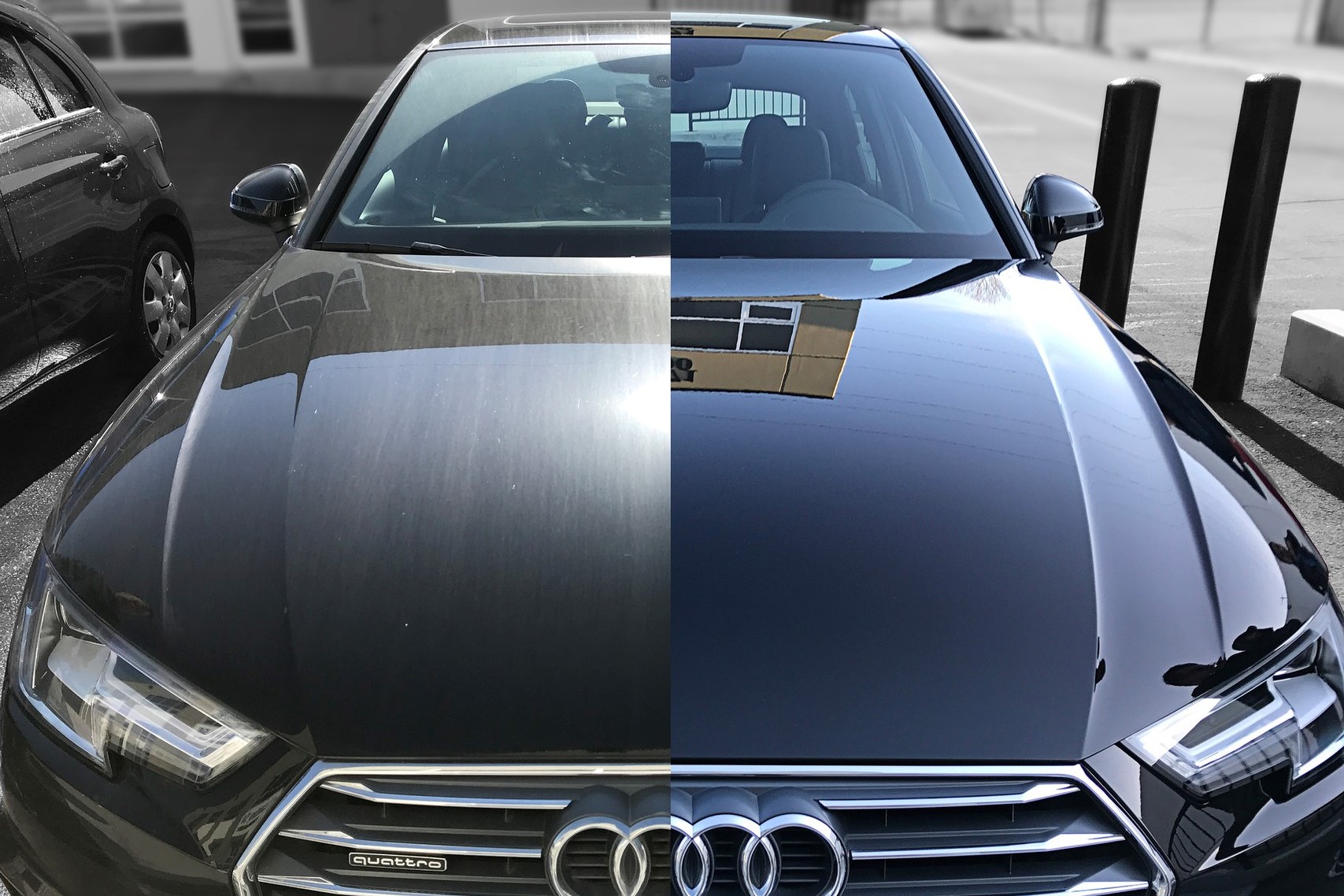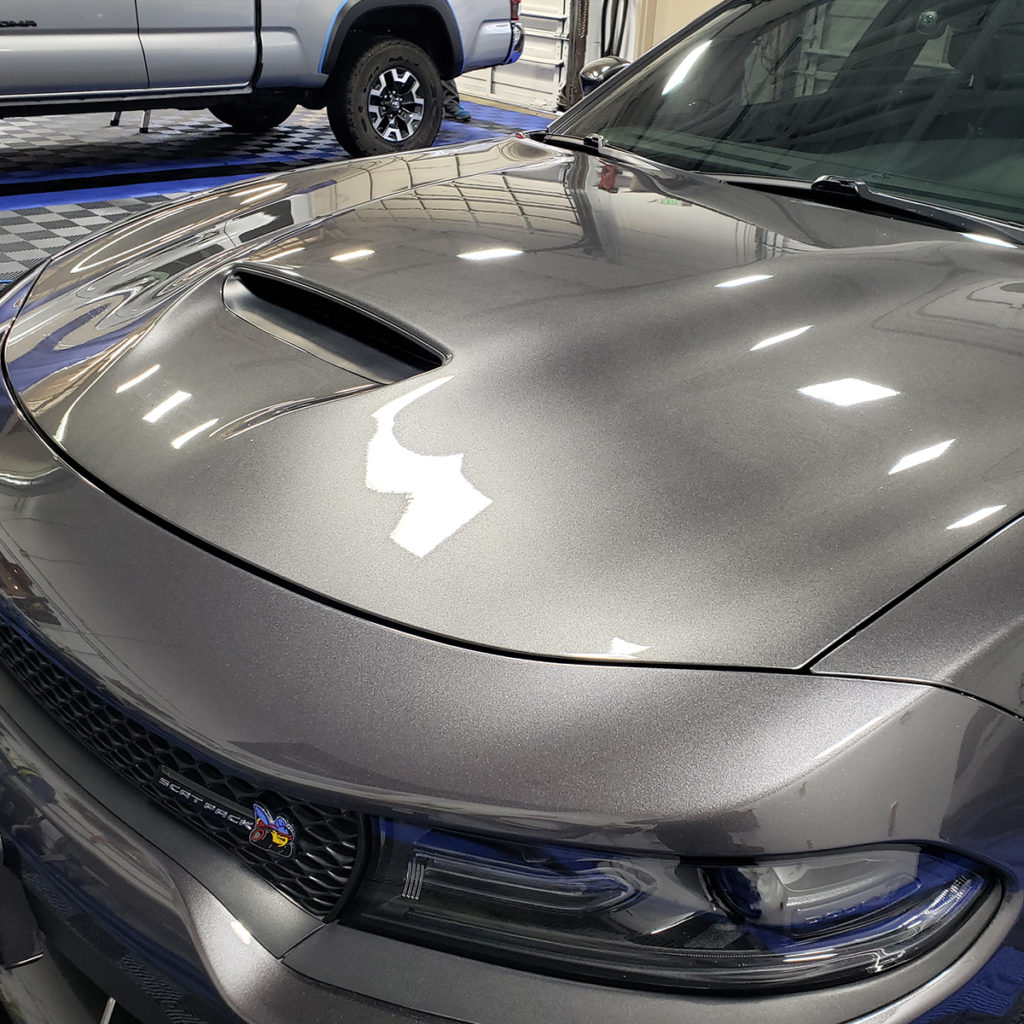Achieve a mirror-like finish with advanced ceramic coating.
Achieve a mirror-like finish with advanced ceramic coating.
Blog Article
Just How Ceramic Finishing Protects Your Automobile's Paint and Maintains It Looking New
Ceramic covering has emerged as a popular solution for auto paint security, providing a durable protection versus a selection of environmental risks. The complexities of how this innovation operates and its advantages over conventional methods warrant a closer evaluation, revealing engaging reasons to consider this innovative approach for your vehicle.
What Is Ceramic Covering?
Ceramic finish is often related to as a revolutionary innovation in auto paint security. ceramic coating. This advanced item is a fluid polymer that chemically bonds with the vehicle's factory paint, creating a safety layer that boosts resilience and visual charm. Unlike conventional wax or sealants, which give only short-term protection, ceramic finishes offer lasting outcomes, often spanning a number of years with appropriate upkeep
The main elements of ceramic coatings are silicon dioxide (SiO2) and titanium dioxide (TiO2), which add to their hydrophobic buildings. This hydrophobic nature enables water to bead and roll off the surface area, properly stopping pollutants like dirt, crud, and bird droppings from sticking to the paint. As a result, cars treated with ceramic coverings require much less regular cleaning and are much easier to maintain.
Furthermore, ceramic layers give UV defense, which aids stop oxidation and fading of the paint due to sunlight exposure. This facet not only preserves the cars and truck's aesthetic allure yet additionally adds to its resale value over time. On the whole, ceramic layers stand for a substantial jump forward in the realm of automobile treatment, offering a robust remedy for lorry proprietors looking for to protect their investment.
Just How Ceramic Finishing Functions
Exactly how does the process of ceramic covering create a formidable barrier versus environmental threats? Ceramic layer contains a liquid polymer that chemically bonds with the manufacturing facility paint of an automobile. This bond forms a protective layer that is both hydrophobic and resilient. The key part of ceramic layers is silica dioxide (SiO ₂), which offers exceptional hardness and durability versus scratches, UV rays, and various other outside contaminants.
When applied properly, the finish penetrates the tiny pores of the paint surface area, creating a semi-permanent bond. This leads to a smooth, shiny coating that improves the lorry's aesthetic charm while concurrently warding off water, dirt, and crud. The hydrophobic nature of the coating ensures that pollutants slide off conveniently, minimizing the regularity of washing and the chance of scrapes during cleansing.

Benefits of Ceramic Layer
The application of ceramic covering offers numerous advantages that dramatically improve the security and appearance of a vehicle's paint. Among the primary advantages is its capacity to produce a durable, hydrophobic layer that wards off water, dust, and various other pollutants. This residential property not only my link keeps the surface cleaner for longer durations yet likewise makes washing the automobile easier and much less labor-intensive.
In addition, ceramic finishes supply remarkable defense versus unsafe UV rays, which can lead to oxidation and fading over time. ceramic coating. This UV resistance helps preserve the initial color and gloss of the car's paint, thereby maintaining its visual charm for many years
Additionally, ceramic layers are chemically immune, using security against acidic impurities such as bird droppings, tree sap, and roadway grime. This resistance helps protect against etching and staining, which can endanger the honesty of the paint.
Last but not least, the sturdiness of ceramic coatings expands beyond traditional waxes and sealants, commonly lasting a number of years with proper upkeep. This durable defense eventually equates right into price savings, as automobile owners can lower the regularity of reapplication and upkeep efforts. Generally, ceramic coatings stand for a substantial investment in vehicle care.
Contrasting Ceramic Finishing to Conventional Methods
Commonly neglected in the mission for optimum car why not try these out security, the comparison in between ceramic coating and typical methods such as shaving and sealers exposes substantial differences in longevity, performance, and upkeep. Conventional waxes usually give a brief safety layer, typically lasting only a couple of weeks to a number of months, while sealants can extend this period to numerous months. In contrast, ceramic finishings use a robust, lasting guard that can withstand for a number of years when correctly used.
In terms of efficiency, ceramic finishings show premium hydrophobic buildings, successfully warding off water and pollutants, which protects against dirt and crud from sticking to the surface. This residential property not just enhances the lorry's look however also streamlines the cleaning process. Typical waxes and sealants, while they might supply some water resistance, do not match the degree of protection given by ceramic coatings.
The maintenance routine for both choices deviates considerably. While typical techniques call for frequent reapplication and upkeep, ceramic finishings are made to hold up against the rigors of day-to-day driving with marginal treatment, making them an extra reliable choice for cars and truck fanatics seeking long-lasting defense. Ultimately, the selection between ceramic covering and traditional techniques depends upon the desired level of defense and upkeep dedication.
Upkeep Tips for Ceramic Coated Cars
Preserving a ceramic coated automobile needs a tactical strategy to ensure the long life of the protective layer. Make use of a pH-neutral hair shampoo and microfiber wash gloves to avoid scraping the finishing while properly getting rid of dust and impurities.
Additionally, stay clear of automated automobile cleans that use brushes, as these can jeopardize the integrity of the ceramic layer. Instead, go with a touchless wash or a hand clean. After washing, drying out is critical; make use of a high-quality microfiber towel to stop water areas.
Applying a ceramic-specific upkeep spray Full Report can improve the layer's hydrophobic buildings and add an extra layer of security. This must be done occasionally, depending on your driving conditions.

Final Thought
To conclude, ceramic finishing functions as an efficient protective step for automotive paint, using a long lasting barrier against environmental damages and boosting the automobile's aesthetic allure. Its distinct homes, including hydrophobicity and UV security, add to resilient luster and cleanliness. Contrasted to standard techniques, ceramic finishes present exceptional efficiency and durability, ultimately minimizing upkeep efforts. Adopting ceramic finish technology can dramatically extend the life expectancy of a vehicle's exterior, guaranteeing it stays aesthetically enticing and well-protected.
Report this page